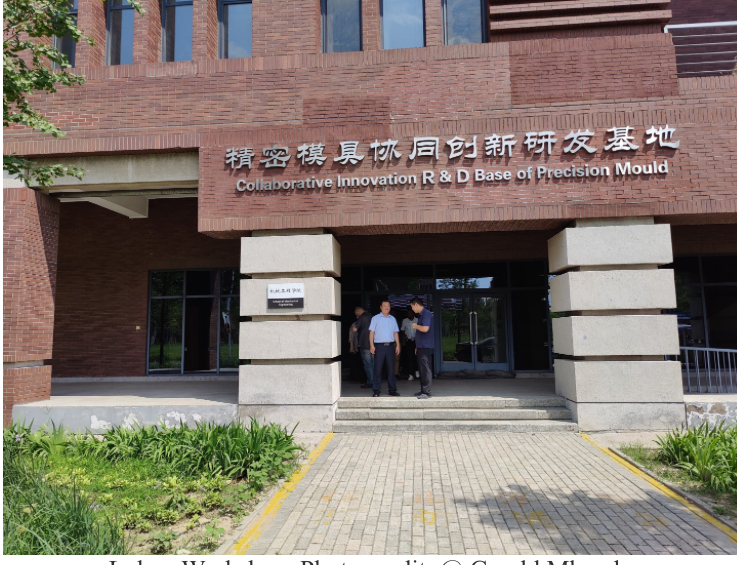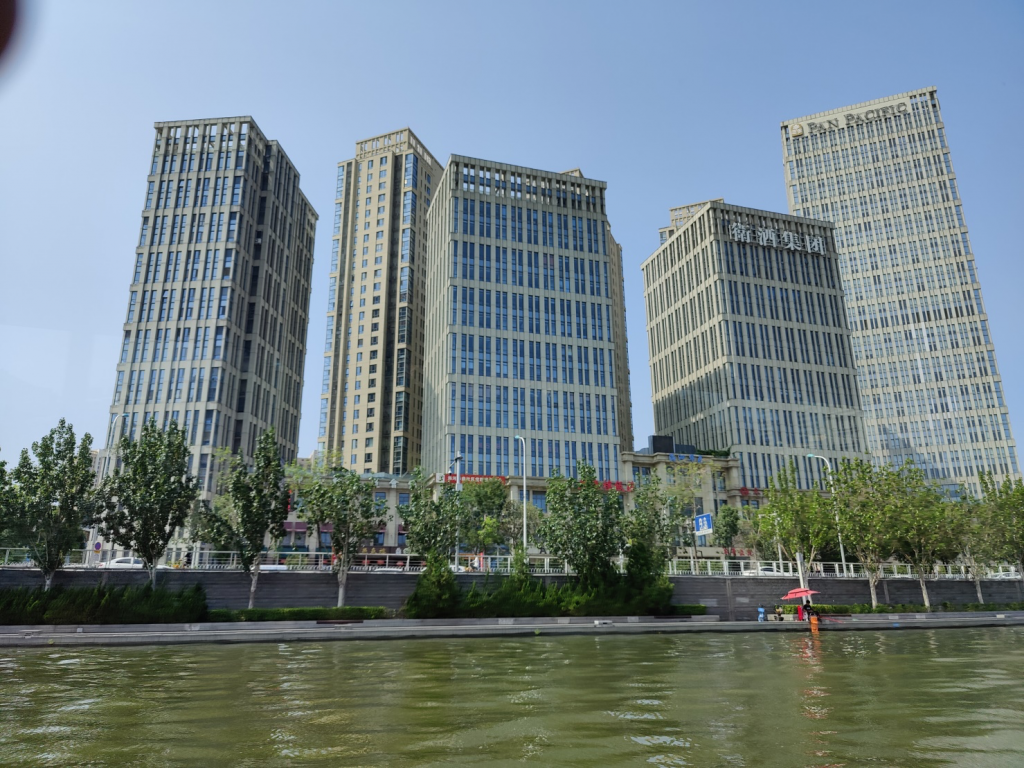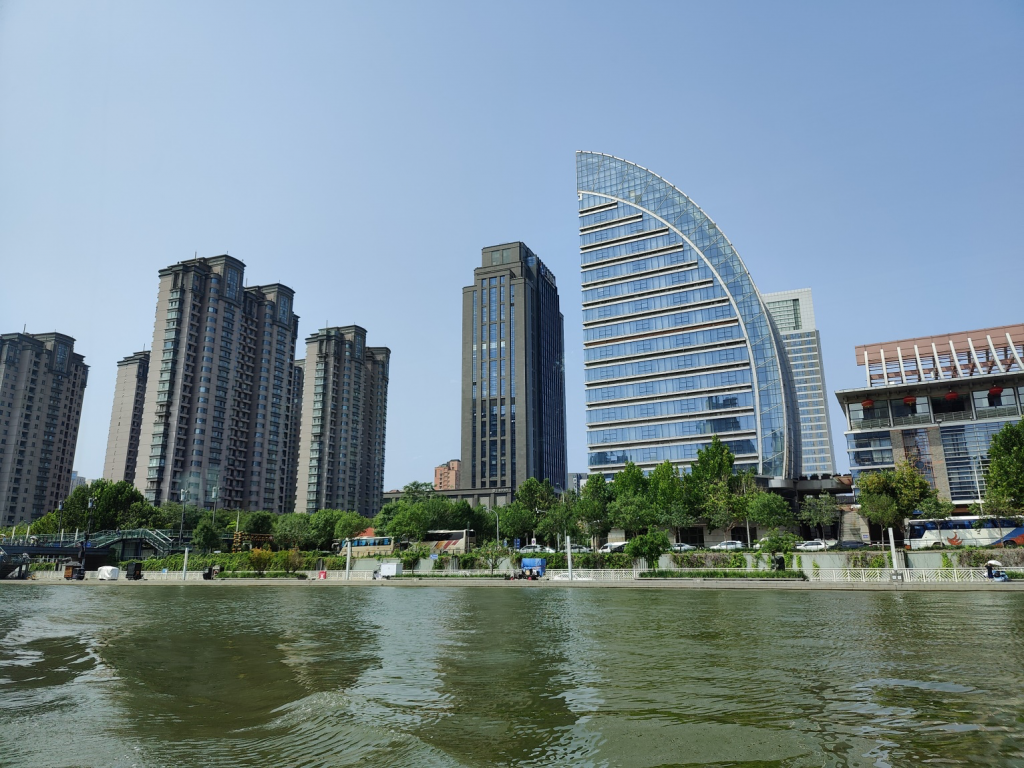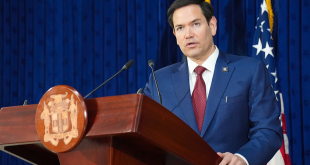Published: August 27,2024
By Gerald Mbanda

Tianjin City view by night. Photo credit. @ Gerald Mbanda
A recent visit by a team of media managers from Rwanda to the city of Tianjin was exciting and an eye opener to China’s futuristic innovations that place the city among the upcoming green, clean and smart cities in the world. Tinjian is one of the largest cities in China, with an estimated population of 14.5 million (2024). It is located 137 kms southeast of Beijing. The city covers an area of 11,917 square kilometers, bordering the Bohai Sea in the east. The Haihe River, with several bridges which flows through the city and empties into Bohai Sea at Dagukou, is one of the tourists’ attractions where boats sail day and night to give tourists the magnificent view of Tianjin city. The Tianjin Eye, over the Haihe River is a 120-meter tall giant ferris wheel which is brightly lit at night giving a beautiful view of the Yongle Bridge. The Tianjin Eyelooks similar to the London Eye in UK on the South Bank of the River Thames.
Tianjin has a history of more than 600 years since its establishment in 1404 and part of this history is well preserved in the Tanjian Museum. Although the visit to the museum was short, I was able to read the history of The Peking Man, Peking Man (Homo erectus pekinensis) which inhabited the Zhoukoudian cave site in modern northern China. The early human writings on bones and animal skins is also visibly displayed in a huge museum.

Tianjin Museum. Photo credit @ Gerald Mbanda
In 1860, Tianjin was opened up as a trading port. Tianjin was home to concessions of numerous Western powers and Japan in the late Qing Dynasty and several colonial architecture can still be seen in the city.Tianjin is now a center of multinational businesses concentrated in the new satellite city known as TEDA (Tianjin Economic Development Area).Tianjin has an extensive modern infrastructure, and is known for the high quality of its industrial products.
As a central municipality, Tianjin has made great achievements in economic and social developments. Entering the 21st century, Tianjin Binhai New Area was incorporated into the national development strategy, leading the Bohai Sea coastal region as a new economic growth driver for China after the Pearl River Delta and Yangtze River Delta economic zones.
In 2008, Tianjin co-hosted the Olympic Games with Beijing, serving as the location for 12 Olympic football matches. In the same year, Tianjin hosted the Summer Davos Forum. From then on, the city has hosted the Summer Davos Forum every two years.
In 2017, Airbus inaugurated its A330 Completion and Delivery Centre (C&DC) in Tianjin, in its global expansion and strategic partnership with China. The A320 Family Final Assembly Line Asia (FALA) in Tianjin is the third single-aisle aircraft final assembly line location of Airbus worldwide, following Hamburg in Germany and Toulouse in southern France. It is also the first Airbus Final Assembly Line outside Europe. The FALA is a joint venture between Airbus and a Chinese consortium comprising Tianjin Airport Economic Area Zone & Tianjin Port Free Trade Administrative Committee and China Aviation Industry Corporation (AVIC).
Tianjin aims to develop into an international port city, an ecological city, and the economic center of North China. A visit to the Sino-Singapore Tianjin Eco-Cityreveals modern sustainable urban development projects, which include transport infrastrure, residential, business and leisure activities. Through innovative concepts and technologies, the Eco-City has been recognized for its breakthrough in the field of green and sustainable development, making it stand out among upcoming futuristic cities in the world.

Luban Workshop Photo credit: @ Gerald Mbanda
Tianjin city is home of the Luban workshop through which China has been able to share Chinese craftsmanship with the rest of the world by opening international vocational education projects. In Africa, Luban workshops are very much required to develop technical talent that is critical in economic and industrial development. The construction and development of the Luban Workshop promotes youth employment and improves quality of life in Africa, as well as contributing to the economic and social development of African countries. Luban Workshop has also greatly enhanced people-to-people engagements between China and Africa, and builds “a closer China-Africa community with a shared future,”and is one of the achievements celebrated under the Belt and Road Initiative (BRI).

Photo credit: @ Gerald Mbanda
Visiting Tianjin Chest hospital eyes meet with highly qualified medical doctors and nurses using high quality facilities and modern equipment, was a great inspiration on how China has invested strategically to ensure the health and well-being of its citizens. Since 1963, under the direction of Premier Zhou Enlai, China has for the last six decades sent medical teams to Africa to extend their skills in treating and ensuring health and well-being to the African friends. This is a sign of friendship higher than mountains.
The visiting Rwandan media managers expressed their wish for Tianjin chest hospital to establish collaboration with Rwanda and share the skills and modern medical equipment with Rwandan hospitals. In Rwanda, Chinese medical teams have been dispatched since 1982 treating millions of Rwandans. The Chinese medical teams operate in the hospitals of Masaka on the outskirts of Kigali and Ngoma in eastern Province. Under Chinese government support, Masaka hospital is being expanded to be the biggest medical hospital in Rwanda.

Photo credit: @ Jin Hong
A welcome dinner by Tinjian municipal officials was a great opportunity to understand more about the history, achievements and future plans for Tianjin city. The people of Tinjian were friendly and welcoming. While on a boat ride on the Haihe River, I was seated next to a young high school boy who initiated a conversation to know where I came from and my impression about China. I told him China is a good country with friendly people, and I admire the rich Chinese culture and how the people are proud about their culture. When I asked him whether he knows where Rwanda is located, he said he did not know. The boy response reminded me my discussion with the municipal official during the welcome dinner. There is need for more cooperation on people to people exchange between China and Africa as a means to promote global development and global civilization initiatives. After overcoming the jetlag fatigue and recovering from sleep disorder dues to different time zones, I am already looking forward to the next memorable trip to China.

Tianjin City view from the Haihe River. Photo @ Gerald Mbanda

Tianjin City view from the Haihe River. Photo @ Gerald Mbanda

Tianjin City view. Photo @ Gerald Mbanda
Gerald Mbanda is a Researcher and publisher on China and Africa.
For comments or opinion write to us on info@africachinareview.com
 Africa -China Review Africa -China Cooperation and Transformation
Africa -China Review Africa -China Cooperation and Transformation
